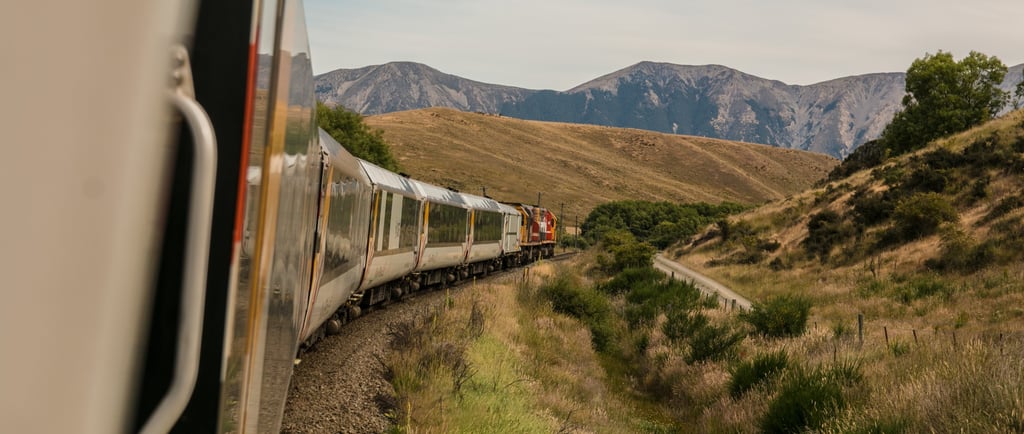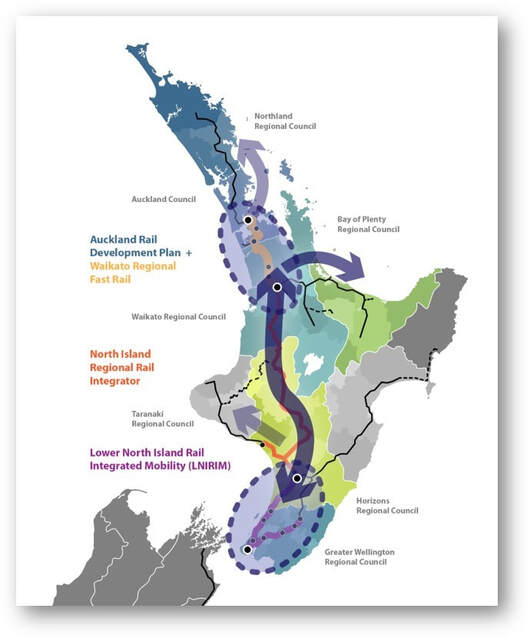Revitalising regional rail in The Land of the Long White Cloud
The past can contribute to the national conversation around a new regional passenger rail network for Aotearoa New Zealand.
REGIONAL RAIL
Arnaud Deutsch
3 min read


The Māori saying ‘Tiro whakamuri, kōkiri whakamua’ translates as ‘We look back and reflect, so that we can move forward’. It’s a proverb true of many facets of life, including in the national conversation around a new regional passenger rail network for Aotearoa New Zealand. WSP technical advisory director Arnaud Deutsch, recently back from presenting on the subject in Melbourne, explains.
In revitalising regional rail, we can look back and take a cue from the Vogel Era of the 1870s. The Government of the day embarked on a massive public works scheme that included laying down a national rail network. Thousands of workers spent years sweating it out with pick, shovel, horse, and cart – building tracks through exceptionally challenging terrain.
Aptly described as the infrastructure that made New Zealand, peak rail hit in the early 1950s when about 100 branch lines and 2,350 stations were operating up and down the country. It was a halcyon time, to be sure.
Provincial populations and flourishing of regional industry marched in lockstep with the growth of rail, but these experienced corresponding drops as road and air travel began to assume transport supremacy. Sadly, by 2020 just three long-distance passenger rail services remained.
We’re a far cry from the golden days of rail, but signs are pointing to a come-back. For decades, demand for regional passenger rail has simmered beneath the surface. Rail continues to have great potential – especially in linking the fast-growing Golden Triangle of Auckland, Hamilton and Tauranga, and connecting our cities with provincial and tourist centres.
It’s pleasing to now see regional rail being scrutinised anew, including at Parliamentary Select Committees. Why? Because slowly but surely, society is cottoning on to the fact that road-centric systems are neither fair nor aligned with the country's goal of reducing carbon emissions.
In a recent groundbreaking move, major funding is being injected into a new, environmentally friendly regional rail fleet for Greater Wellington Regional Council (GWRC). This marks the first significant investment in regional rail in over thirty years and is crucial step in inspiring other regions to follow suit - revitalising regional rail networks for their own communities.
In looking ahead to the rollout of national passenger rail, serious consideration needs to be given to 'connector' trains that service district towns outside our main urban centres. These connector rail services play a pivotal role in enhancing regional connectivity and promoting sustainable transportation.
In the North Island, for instance, establishing a connector between Hamilton and Palmerston North can bridge the gap between the Auckland-Waikato Te Huia service and the upcoming Wellington-Wairarapa/Manawatu service. Such connectors not only reduce the burden on road infrastructure but also offer a more eco-friendly and convenient travel option for residents in these district towns. Moreover, they foster economic growth, encourage tourism, and ultimately create a more integrated and accessible rail network for the benefit of all New Zealanders.
Just as Julius Vogel’s railways were a multigenerational investment, so too is a future network of modern, fast rail that will be a highly efficient way of transporting significant numbers of Kiwis. Reviving regional passenger rail will help reduce our sky-high transport emissions and turn around reduced opportunities in rural areas.
The essence of regional rail is its service to communities. Many rural communities, local councils, and regional councils already have a clear vision of how rail service investment could transform their towns. Thanks to central government backing, the GWRC now has its first financed project, and my earnest hope is that this will spark a much wider movement.
For regional rail to truly advance, it must take precedence over other transport investments. While past hurdles and underinvestment have diverted resources away from regional rail, it's now time to place rail squarely at the heart of our national transport priorities. So, let’s take a leaf from the days of yore and commit to fast, reliable regional rail investments that breathe new economic life into communities, reduce car dependency, and help get us to net zero emissions by 2050.


Credit: Keith Strode-Penny
